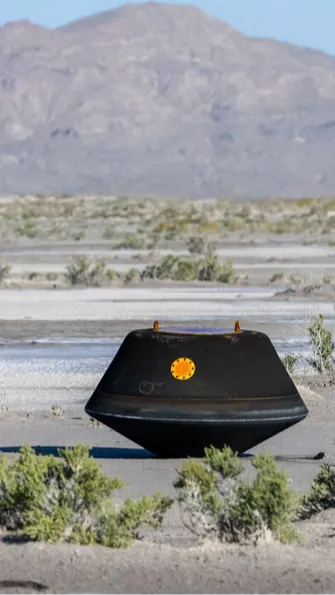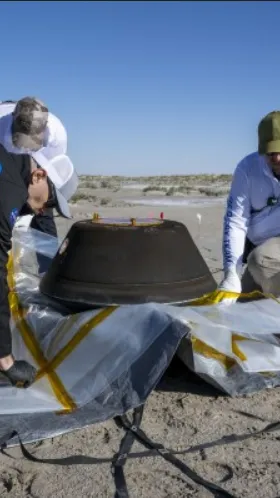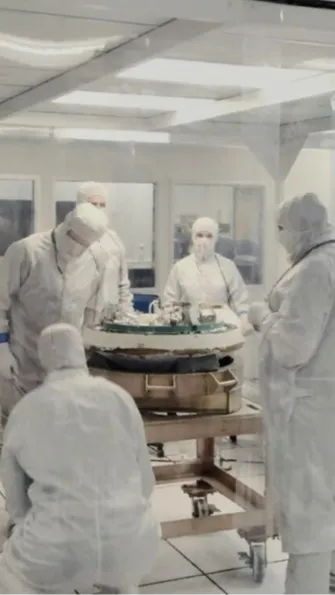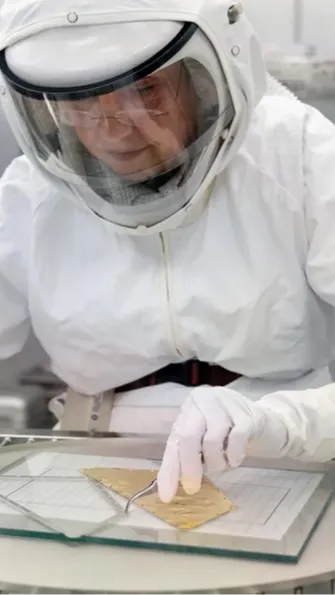


Dust and rock samples from the "most dangerous rock in the Solar System" have been brought back to Earth.
The US space agency NASA landed the material in a capsule in the Western Desert of Utah. The samples were taken from the surface of asteroid Bennu in 2020 by the OSIRIS-REx (Origins, Spectral Interpretation, Resource Identification, and Security-Regolith Explorer) spacecraft.
NASA says it wants to learn more about the object because the asteroid has a high chance of hitting Earth within the next 300 years. But more than that, the sample will likely provide new insights into the formation of the Solar System 4.6 billion years ago and perhaps even how life began on Earth.
NASA confirmed the landing on desert land owned by the Ministry of Defense on Sunday at 10:52 local time.

A heat shield and parachute slowed its descent and dropped it gently. The BBC reported this on Monday, September 25, 2023.
When asked how the rescue mission went, several NASA teams said, "It was amazing."
OSIRIS-REx lead investigator Dante Lauretta said his first reaction to seeing the capsule float away with its parachute was to "cry like a baby".
"Some of our instruments are actually looking at the atoms that make up the crystals in these rocks," Prof. Lauretta explained.
"When you work at that scale, one rock is an infinite landscape to explore. We'll be working on this material for decades and decades to come."

According to the researchers, if the samples contain carbon compounds that may have been involved in creating life, then mixing rock material with current Earth chemicals should be avoided.
"Cleanliness and prevention of contamination on the spacecraft has been a very strict requirement of this mission," said OSIRIS-REx deputy project manager Mike Morrow.
"The best way to protect the samples is to get them from the ground to the clean lab we set up in the hangar as quickly as possible and purge them with pure nitrogen gas. Then it's safe."
The recovery team will disassemble the capsule, removing its heat shield and back cover but leaving the sample safe inside the inner tube.

British scientist Ashley King will be part of the six-member "Quick Look" team conducting the early assessment.
"I expect to see very soft, very brittle rock-type material," said the National Museum of Natural History expert.
"It will have clay minerals - silicate minerals that have water locked into their structure. A lot of carbon, so we'll probably see carbonate minerals, and some things we call chondrules and also calcium-aluminum inclusions, which were the first solid materials to form in our Solar System.
NASA is planning a press conference on October 11 to examine their findings. The small specimens will be distributed to relevant research teams around the world. They hope to report back on related studies within two years.

This is notes